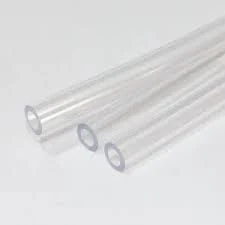Nov . 17, 2024 22:50 Back to list
polyethylene pipe fittings
The Versatility and Benefits of Polyethylene Pipe Fittings
Polyethylene (PE) has become a preferred material in the construction industry, particularly for piping systems. Its applications range from sewage and drainage systems to agricultural irrigation and drinking water supply. One of the critical components that enhance the functionality and reliability of polyethylene piping systems is polyethylene pipe fittings. This article delves into the significance, benefits, and applications of polyethylene pipe fittings, showcasing their versatility in various sectors.
What are Polyethylene Pipe Fittings?
Polyethylene pipe fittings are components used to connect sections of polyethylene pipes, allowing for direction changes, transitions between different pipe sizes, and terminations. Common types of polyethylene fittings include elbows, tees, couplings, reducers, and caps. They are manufactured using high-density polyethylene (HDPE) or low-density polyethylene (LDPE), ensuring durability and resistance to various environmental conditions.
Advantages of Polyethylene Pipe Fittings
1. Corrosion Resistance One of the most significant advantages of polyethylene pipe fittings is their resistance to corrosion. Unlike metal fittings, polyethylene does not rust or corrode over time, making them ideal for harsh environments or applications involving chemical exposure.
2. Lightweight and Easy to Handle Polyethylene fittings are considerably lighter than traditional materials like PVC or metal. This feature simplifies transportation, handling, and installation, reducing labor costs and time on the job site. Workers can easily maneuver and assemble them, making the installation process more efficient.
3. Flexibility Polyethylene can easily adapt to various temperatures and pressures, allowing for a degree of flexibility that many other materials cannot offer. This flexibility helps reduce the risk of pipe and fitting failures caused by ground movements or thermal expansion.
4. Cost-Effectiveness The initial investment for polyethylene fittings is often lower than that for fittings made from other materials, primarily due to their lightweight nature and ease of installation. Additionally, their durability translates into lower maintenance costs over time, making them a cost-effective choice for many applications.
5. Leak Prevention When properly installed, polyethylene fittings create reliable, leak-free joints. The fusion welding techniques commonly used with polyethylene help create strong, homogenous bonds between fittings and pipes, ensuring a watertight seal.
polyethylene pipe fittings

6. Environmental Impact Polyethylene is a recyclable material, contributing to environmentally sustainable practices. Choosing polyethylene fittings can help reduce the environmental footprint associated with building and construction projects.
Applications of Polyethylene Pipe Fittings
Polyethylene pipe fittings find applications in various sectors
1. Water Supply Systems In potable water applications, polyethylene fittings enable safe and reliable connections, ensuring that drinking water remains uncontaminated as it travels through the distribution system.
2. Wastewater Management PE fittings play a crucial role in sewage and effluent management systems where durability and corrosion resistance are paramount. They can withstand the harsh chemicals often found in wastewater while providing efficient flow.
3. Agriculture In agricultural settings, polyethylene fittings are widely used for drip irrigation systems, delivering water directly to the roots of crops. Their reliability and resistance to UV rays make them ideal for outdoor use.
4. Industrial Applications Various industries utilize polyethylene fittings in plant operations, including chemical processing, mining, and manufacturing. The fittings’ ability to handle corrosive substances and extreme temperatures makes them indispensable in these areas.
5. Telecommunications Polyethylene pipe fittings are also used in underground networks for telecommunications, providing a protective conduit for sensitive cables and fibers.
Conclusion
Polyethylene pipe fittings are integral to modern piping systems, offering numerous benefits in terms of performance, cost, and environmental impact. Their versatility across multiple sectors demonstrates their importance in infrastructure development. As industries continue to seek reliable and sustainable solutions, polyethylene pipe fittings will undoubtedly hold a prominent position in the future of construction and utility management. Embracing these advanced materials not only facilitates efficient operations but also contributes to the sustainable management of resources.
-
PVC Grey Sheet for Extraction: Chemical Resistant & Durable
NewsAug.19,2025
-
Durable PVC Pipe Fittings for Plumbing & Irrigation Needs
NewsAug.18,2025
-
HDPE Steel Belt Reinforced Spiral Corrugated Pipe | High Strength
NewsAug.17,2025
-
HDPE Pipe Fittings: Durable, Leak-Proof Solutions
NewsAug.16,2025
-
Premium CPVC Sheet: High-Temp & Chemical Resistant Solutions
NewsAug.15,2025
-
Durable PPR Pipe for Hot & Cold Water Systems - Easy Install
NewsAug.14,2025

